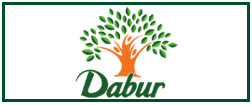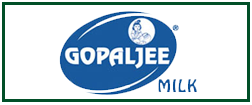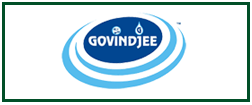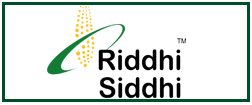|
|
|
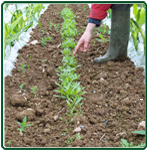 Integrated Weed Management (IWM) is the combination of multiple management tools to reduce a pest population to an acceptable level while preserving the quality of existing habitat, water, and other natural resources. Combinations of biological, mechanical, and chemical management practices are utilized in IPM programs to efficiently suppress a pest population at the most effective/desirable points during the pest’s lifecycle or growing season.
For example, an IWM program for Canada thistle, Cirsium arvense, may consists of multiple management scenarios throughout the growing season to achieve the most efficient suppression of this invasive weed in contrast to using any one given management practice by itself. Below are listed steps throughout the growing season that may be followed in a one-year Canada thistle IWM management strategy. Integrated Weed Management (IWM) is the combination of multiple management tools to reduce a pest population to an acceptable level while preserving the quality of existing habitat, water, and other natural resources. Combinations of biological, mechanical, and chemical management practices are utilized in IPM programs to efficiently suppress a pest population at the most effective/desirable points during the pest’s lifecycle or growing season.
For example, an IWM program for Canada thistle, Cirsium arvense, may consists of multiple management scenarios throughout the growing season to achieve the most efficient suppression of this invasive weed in contrast to using any one given management practice by itself. Below are listed steps throughout the growing season that may be followed in a one-year Canada thistle IWM management strategy.
 |
Fall (Late September, October): Spot spray or broadcast thistle plants/rosettes, overseed area with competitive native grasses and forbs. |
 |
Early Spring (April - early May): Spot spray (or selectively broadcast) thistle rosettes with a selected herbicide; use a controlled burn to destroy remnant vegetation and seeds on the soil surface. |
 |
Late Spring (May - early June): Spot spray any emerging thistle plants. |
 |
Summer (Late June, July, early August): Mow thistle patches prior to seed development; release Canada thistle biological control agents. |
 |
Late Spring (May - early June): Spot spray any emerging thistle plants. |
 |
Fall (Late September, October): Spot spray remaining thistle plants and/or rosettes. |
|
 |
|
|
Biological Control |
|
Biological control, as it applies to weed management, is the use of plant-feeding insects, pathogens, or diseases that are host-specific to a noxious or invasive weed species, with the intention of suppressing the weed's population to an acceptable level. Biological control does not intend to eradicate the target weed species, but instead is used to bring the plant into balance with the rest of the landscape. It is important to note that successful biological control agents are specific to the plant they are intended to control. In other words, the biological control agent feeds and develops only on the intended weed species. Therefore, the risk to other plants and organisms in the ecosystem is minimal.
Biological control is intended to be a cost-effective and long-term solution to weed management. It may take several years for biological control agents to establish, but once their populations begin to build-up to appropriate levels, they provide long-term suppression and reduce management costs significantly. Leafy spurge, purple loosestrife, and spotted knapweed are all examples of noxious and invasive weed species where biological control is successfully being used in Minnesota.
|
|
 |
|
Chemical Control |
|
Chemical control in weed management is the use of synthetic or naturally occurring compounds that are applied to noxious and invasive weed species with the intent of killing those plants. Chemicals (herbicides) range in selectivity to certain types of plants and their persistence within the environment. Herbicides are typically applied in dry (granular) or liquid forms. Some types of herbicides are applied before weeds germinate (pre-emergent) and others are applied after germination (post emergent). Extreme caution must always be followed when handling or attempting to work with any herbicide. By law, all herbicides must be labeled according to their use and users must adhere strictly to label instructions and warnings.
Chemical controls are usually short-term solutions to weed problems. In some cases, herbicides have to be reapplied annually and certain weed species can begin to develop resistance or tolerance to specific chemicals. Furthermore, large-scale applications can be expensive and detrimental to the environment. However, when herbicides are used on a selective basis or as part of an IWM program, they are a very useful tool for managing weed problems.
|
|
 |
|
Mechanical Control |
|
Mechanical control of weeds consists of using machines or other human-made tools to suppress weeds. Mowers, cultivators, saws, rakes, etc., are all examples of tools commonly used in mechanical weed management. The use of hand tools to physically pull or destroy weeds can be a very successful approach to managing small infestations of weeds. However, hand tools alone are impractical on large-scale weed problems. Mechanical controls like cultivating and mowing are generally used on larger populations of weeds to inhibit growth or reduce seeding. When used alone and on a large scale, mowers and cultivators can be disruptive to the greater landscape and may cause more problems than they solve. When used as part of an IWM program, targeted mechanical controls can play an important role in overall weed suppression.
|
|
 |
|
Other Control Methods |
|
There are other ways to manage weeds by altering landscapes through human intervention. Three good examples of this would be using fire through prescribed burns to promote healthy regrowth of prairies, manipulation of water levels to promote healthy establishment of native wetland species, and multi-species grazing using combinations of livestock like sheep and goats that have developed a palette for noxious weeds. In each case, weeds are managed via fire, flooding, or grazing resulting in increased native or desirable vegetative regrowth which increases competition for noxious or invasive plants, thus leading to healthier habitats.
The take-home message is that each type of weed control has its advantages and disadvantages. The goal of any noxious and invasive IWM program should be to combine the advantages of each control method to successfully suppress populations of undesirable plant species. In most cases, successful IWM projects save money, reduce non-target impacts, protect natural resources, and provide more long-term sustained control than using any one management technique by itself.
|
|
|
| |
|


 Integrated Weed Management (IWM) is the combination of multiple management tools to reduce a pest population to an acceptable level while preserving the quality of existing habitat, water, and other natural resources. Combinations of biological, mechanical, and chemical management practices are utilized in IPM programs to efficiently suppress a pest population at the most effective/desirable points during the pest’s lifecycle or growing season.
For example, an IWM program for Canada thistle, Cirsium arvense, may consists of multiple management scenarios throughout the growing season to achieve the most efficient suppression of this invasive weed in contrast to using any one given management practice by itself. Below are listed steps throughout the growing season that may be followed in a one-year Canada thistle IWM management strategy.
Integrated Weed Management (IWM) is the combination of multiple management tools to reduce a pest population to an acceptable level while preserving the quality of existing habitat, water, and other natural resources. Combinations of biological, mechanical, and chemical management practices are utilized in IPM programs to efficiently suppress a pest population at the most effective/desirable points during the pest’s lifecycle or growing season.
For example, an IWM program for Canada thistle, Cirsium arvense, may consists of multiple management scenarios throughout the growing season to achieve the most efficient suppression of this invasive weed in contrast to using any one given management practice by itself. Below are listed steps throughout the growing season that may be followed in a one-year Canada thistle IWM management strategy.


